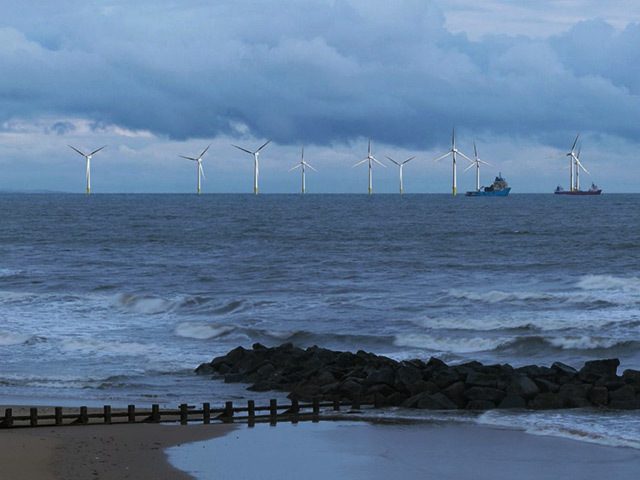
Plans for an offshore wind farm off Scotland’s north-east coastline are moving forward, despite uncertainties over whether the project will still get access to EU funding.
The 40million Euro investment was pledged to help propel the European Offshore Wind Deployment Centre (EOWDC), at Aberdeen Bay, and to develop the latest innovations in technology.
Funding was proposed as part of a 3.5billion Euro package dedicated to help finance offshore wind energy across Europe.
Scottish Ministers granted approval for the project in March 2013 and developers are now carrying out preparatory surveys of the site in the North Sea.
However, it is now not clear whether the project – which was at the centre of a major legal battle with Donald Trump, who claims it will spoil the views from his nearby golf course – will still be entitled to receive EU funding.
Last night Andy Paine, head of UK offshore wind development for Vattenfall and project director for Aberdeen Offshore Windfarm Ltd said: “The partners are in regular dialogue with the EU regarding the 40million Euro grant for the EOWDC project and will continue that dialogue.
“Clearly the referendum result is a new factor but it is too early to state what the implications may be for the grant, if any.
“Meantime, the partners continue to work towards seeing the project come to fruition which includes preparatory surveys and procurement activity.”
It was hoped that the scheme would become a European test centre, benefiting local businesses and attracting new players into the region, while placing Aberdeen as a leading UK renewable energy hub.
Under the plans, 11 turbines would be built in a grid formation between one and three miles out to sea stretching about three miles from the Bridge of Don to Blackdog beach.
The centre would also promote new energy ideas and techniques, and would be linked to the wind farm, which would provide energy and income for the centre.
Last night Lord Nicol Stephen said the floating wind farm would be an “important project for the future of the north-east”.
The Lib Dem peer said, if the marine licence for the project is granted, work could get underway next year with an aim for the first turbine at sea by spring 2018.
However the added the stretch of water outlined in the application before councillors yesterday was attached to the licence, and was selected due to the depth of water at the spot.
Lord Stephen said: “It is good news that the councillors are supporting the project in principle. There is a trench in that location which provides deeper water and we need deeper water for the development. It is a carefully chosen site.
“Because there are only eight turbines it needs to be closer to shore then floating full-scale projects would be because of the cost associated with the cabling as well, and connecting to the substation.
“With bigger projects, the intention is to go over the horizon. The advantages of floating technology is it can go further offshore.
“These are the advantages that make floating technology the favourable solution for many people.
“The application will have to be considered by Marine Scotland based on this location.”
He added: “Normally in the north-east any major project would be substantially oil and gas, this is entirely renewables.
“It could give a boost to the local economy in the current climate of the oil and gas industry.”
The windfarm is estimated to be worth between £200million and £250million.
Recommended for you
